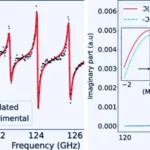Key Points
- Essential for preventing fluid leaks and ensuring movement in heavy machinery and hydraulic systems.
- Professor Chao Peng investigates wear mechanisms and the interplay between lubrication and wear in rubber seals.
- Tests at -55°C to 135°C revealed that the rubber seals begin to lose functionality at 80°C, leading to seal failure.
- Uneven rubber surfaces and complex tribological interactions hinder accurate durability forecasts. Environmental factors heavily influence lubrication properties.
Rubber seals are crucial in heavy-duty machinery and hydraulic systems, ensuring movement and preventing fluid leaks. These seemingly minor components are indispensable in applications such as excavators and car brakes, contributing to operational safety and reliability. However, their durability remains a pressing challenge in high-pressure environments.
Professor Chao Peng, a Humboldt Research Fellow, is tackling these issues at the Institute for Fluid Power Drives and Systems (IFAS) at RWTH Aachen University. Recognized for his expertise in rubber seal wear mechanisms, Professor Peng aims to address gaps in understanding the interplay of lubrication and wear. “A sealing ring might be a small component of a machine, but its failure can have a big impact,” he notes.
Existing models simulate friction between rubber and counter surfaces to predict potential failures, but none account comprehensively for both lubrication and wear mechanisms. Rubber seals often operate under extreme conditions, facing high friction due to the pressure they endure. Furthermore, the uneven surface of the rubber and the complex interaction between the elastic material and cylinder rods complicate accurate wear predictions.
Professor Peng’s research involves testing rubber seals under various conditions, including temperatures ranging from -55°C to 135°C (-67°F to 275°F). His experiments reveal that at 80°C (176°F), rubber seals begin to lose functionality, resulting in fluid leaks. These findings underscore the need for advanced predictive models and improved material durability.
Lubrication is another critical factor influencing seal performance. Environmental conditions significantly affect lubrication properties, impacting both friction and sealing capabilities. By closely studying these variables, Professor Peng hopes to refine the understanding of tribological contact in hydraulic systems.
Professor Peng expresses his enthusiasm for this research opportunity. He describes, “I experience firsthand the impressively high level at which my colleagues work here every day.” Professor Katharina Schmitz, a globally recognized expert in fluid power seal technologies and the Head of Ifas, hosts his work. Professor Peng’s research, supported by the Alexander von Humboldt Foundation, aims to develop more durable rubber seals, ultimately improving the reliability and efficiency of critical machinery worldwide.










